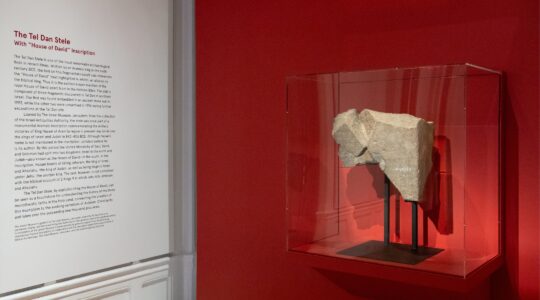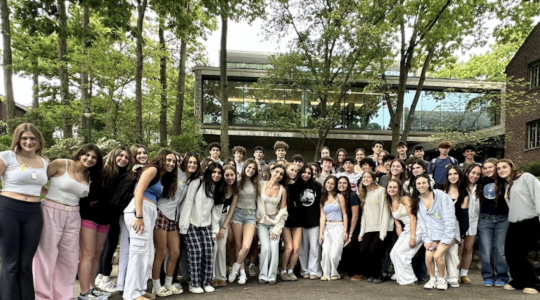I recently inhaled Adina Hoffman and Peter Cole’s new book Sacred Trash: The Lost and Found World of the Cairo Geniza. Part of the Jewish Encounters series from Schocken and Nextbook, this headlong excavation into one of the greatest literary finds in Jewish history opened my eyes to the complex drama behind the sudden “appearance” of this storehouse of medieval Hebrew documents.
Famously, this treasure trove of literary scraps found in the attic of an old Cairo synagogue was “bursting with ten centuries of…middle-class Jewish detritus—its letters and poems, its wills and marriage contracts, its bills of lading and writs of divorce, its prayers, prescriptions, trousseau list, Bibles, money orders…”
What is so essential about these findings, the authors state, is that the cache “embraces and embodies the world as it really was, warts and wonders alike…” It was, in other words, “a holy junk heap.”
Phrases such as that and “Sacred Trash,” as well the exploration of what a literary treasure trove means to us today, seem to nail the zeitgeist on the head in several important ways.
The first has to do with the idea of texts – actually writing on actual paper – and what it means to us as we accelerate further into the digital age. What does it mean, for instance, that Gmail has an “archive” function to ensure that no email is ever lost? And do we really want to keep every possible communication or note, no matter how minor or irrelevant?
Francesco Spagnolo, curator of collections at The Magnes Collection for Jewish Art and Life at UC Berkeley, and a leader in thinking about Jewish digital archives, explained that there is much to learn from thinking about a geniza for a digital age.
“In a way, the Internet as a whole is a potential geniza,” he explained. Traditionally, a geniza “contains what is hidden because no longer usable (trash) but also what is deemed unusable (inappropriate). And as we know, the net contains both.”
Sacred Trash makes it clear that it was hard to know what, in that collection of Cairo writings, was a jewel and what was garbage. One man’s urgent treasure, the authors suggest, was another scholar’s “pestiferous wrack.”
This confusion or conflation of garbage and high culture is also, oddly, a key theme in today’s art world. The recent issue of ARTnews features a cover story called “Trash Can School: Why Artists are Finding Meaning in Garbage.” Among the leaders in this field is the British artist Mike Nelson, whose rigorously chaotic rooms of junk are often compared to archaeological finds. Then there is the hot show of season, Cory Arcangel’s “Pro Tools” exhibition taking up a full floor at the Whitney Museum of American Art, which explores how we absorb, interpret and play with the flotsam of obsolescent technology.
A leader in this field, perhaps the first significant contemporary artist to connect trash with deep moral and communcal meaning, is Mierle Laderman Ukeles, who since 1977 has been the official artist-in-residence in the New York City Department of Sanitation.
As the ARTnews articles make clear, the question of what we keep and what we throw away has taken on political, cultural and ecological meaning that is often almost religious in tone.
There is also something deeply personal about this conflation of treasure and garbage, of the way the quotidian and the holy live cheek by jowl in our lives. I thought about this over the last week as I went through an academic year’s worth of papers and artwork with my kids. Despite the fact that much of what had been heaped in a pile on the coffee table would be rejected as valuable even by them, the group of documents as a snapshot of their lives simply glowed with meaning and biographical information. Not for the first time it occurred to me, in my intermittently catastrophic imagination, that if there were a fire in the house, I would grab not the briefcase with jewels and formal documents but the story of a penguin who lost his way, or a draft of an essay in which my son explains, in lurid detail, how much he hates writing.
Support the New York Jewish Week
Our nonprofit newsroom depends on readers like you. Make a donation now to support independent Jewish journalism in New York.
Circling back to the idea of Jewish literary texts, I’m struck by how much of Jewish literary production over the past century – since the 1896 epiphany by Solomon Schechter about the value of the Cairo Geniza – revolves around the excavation and interpretation of Jewish literary “junk.” Think about S. Ansky’s ethnographic excavation of the folklore of Eastern Europe (which led to his play “The Dybbuk”), or poet Jacob Glatstein’s iconic image of discarded tefillin floating in New York harbor, or Dara Horn’s central scene in her novel In the Image, where she imagines her generation as deep-sea archeologists who reclaim those tefillin.
Ultimately, Sacred Trash – like Judaism’s constant engagement with the past – asks us to see the messy creation and containment of Jewish text and wisdom as a holy endeavor.
Daniel Schifrin is director of public programs and writer in residence at the Contemporary Jewish Museum in San Francisco.
The New York Jewish Week brings you the stories behind the headlines, keeping you connected to Jewish life in New York. Help sustain the reporting you trust by donating today.




